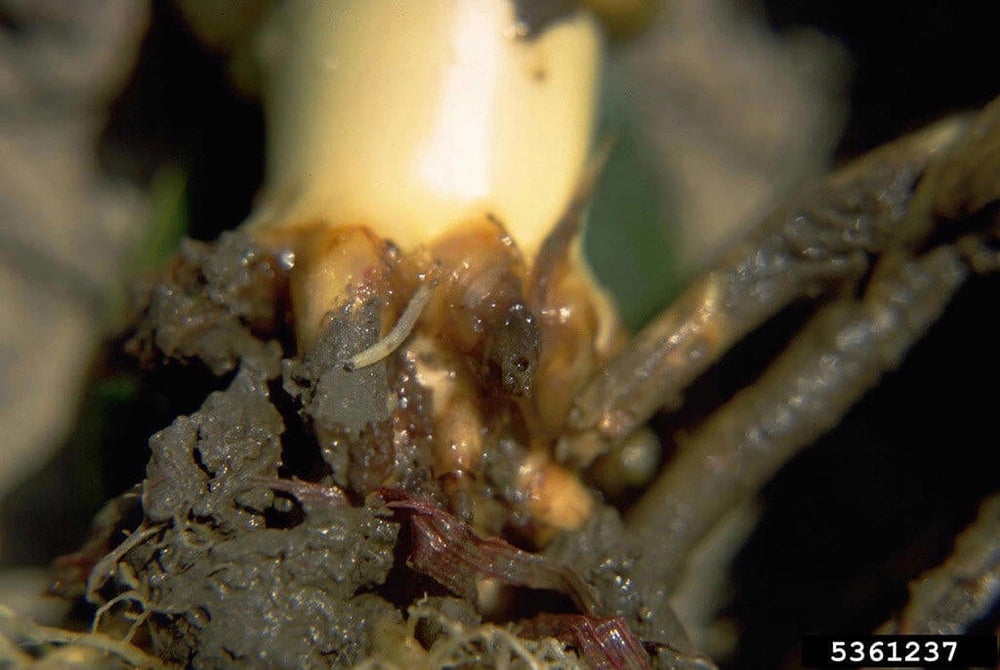
Corn rootworms damage crops by chewing on the roots. But because they attack below the surface, you probably won't know they're there until your crops start suffering. That's why preventing corn rootworms is key. Read on to learn how to identify, prevent, and control corn rootworm so you don't miss out on a single ear of corn on the cob this summer.
How to get rid of corn rootworms
What are corn rootworms?
There are actually three species of corn rootworms: Western corn rootworms (Diabrotica virgifera virgifera LeConte), Northern corn rootworms (Diabrotica barberi Smith and Lawrence), and Southern corn rootworms (Diabrotica undecimpunctata howardi Barber).
Regardless of species, all rootworms cause damage by eating the roots of corn roots in both the larval (grub) and adult (beetle) stages. This cuts off water and nutrient supplies to the plant, causing poor development. Corn rootworm damage may appear in the form of wilting, a tendency to fall over in rain and wind due to a shallow root system, and a growth habit known as "goosenecking," where the plant grows horizontally before growing upright. You may also notice chewed leaves and silks from adult beetles.
The Southern rootworm, also known as spotted cucumber beetle, is about one-quarter inch long, yellowish-green in color, and has 11 black spots on its back. The adult beetles may also damage cucurbit crops, such as cucumber, squash, and melons. The Southern rootworm does not cause as much damage in the Northern states since it cannot overwinter there.
Adult Western corn rootworms are about one-quarter to one-half inch long and yellow to green in color with black stripes along the wings. Western rootworms overwinter as eggs in soil.
Northern corn rootworms are about a one-quarter inch long and green. They also overwinter as eggs in the soil.
How do I prevent corn rootworms?
The easiest, most effective way to prevent injury to plants from corn rootworms is by changing where you plant your corn each year (a practice called crop rotation). Adult rootworms lay their eggs primarily in cornfields within the top six inches of soil in the fall. The eggs hatch the following spring and larvae begin to feed and tunnel into corn roots. If corn is grown in another area, the larvae will not be able to locate and destroy corn roots. Bonus: Crop rotation helps replenish your soil's nutrients, too!
To help prevent infestations, clean up corn plants as soon as you harvest. Eliminating places for eggs to overwinter is key to stopping corn rootworms before they start.
How do I control corn rootworms?
To control adult corn rootworms already present, spray with an approved insecticide in your state. Consult your regional Extension office before choosing a product, and always follow label instructions. You can find the nearest Extension office through the Cooperative Extension System map.
You can control corn rootworms while they're still in the larval (grub) stage by spraying a rootworm insecticide such as Ortho® BugClear™ Insect Killer for Lawns & Landscapes Ready-to-Spray, according to label directions.
Corn rootworms can be frustrating to find in your garden. However, by engaging in good gardening practices such as crop rotation, you can help keep them at bay. And when they do appear, you can call on products and resources to help keep your corn crop healthy.
You can find the nearest Extension office through the Cooperative Extension System map. You can also access a nationwide network of Extension experts for answers to your specific questions through the Bonnie Plants Ask An Expert service.





 Herbs
Herbs
 Vegetables
Vegetables
 Fruit
Fruit
 Flowers
Flowers
 Succulents
Succulents


